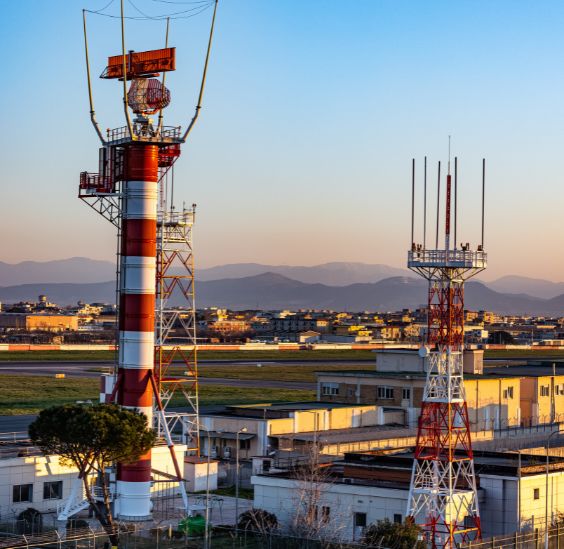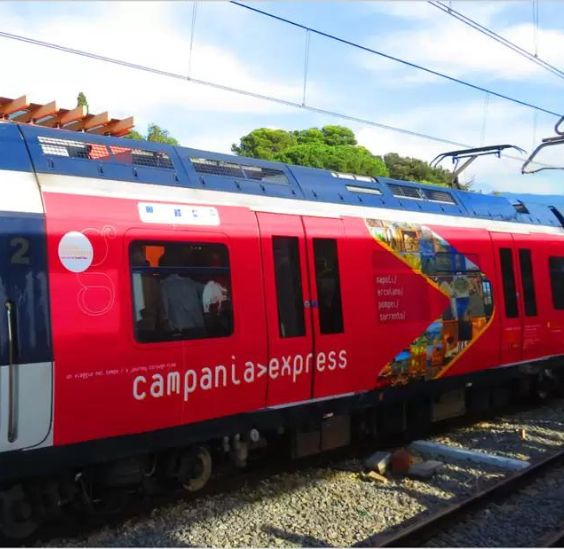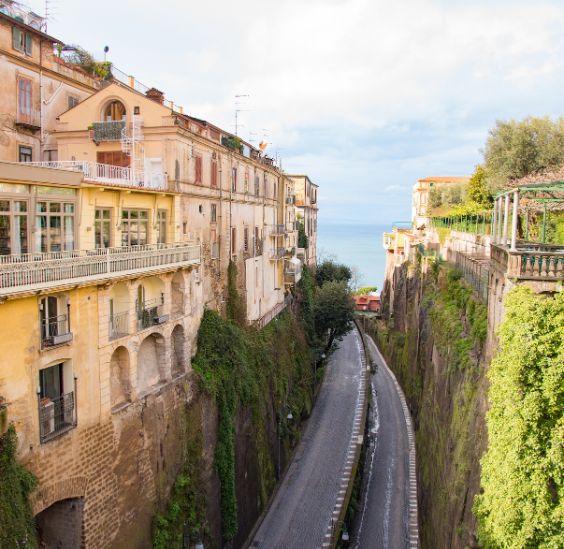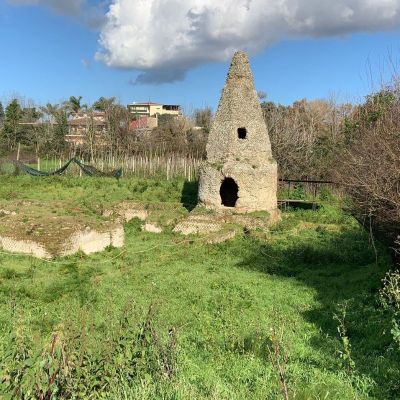Nestled in the heart of Italy’s Campania region, Naples and Sorrento are two vibrant cities that capture the essence of Italian charm and scenic beauty. While Naples boasts a rich historical tapestry and bustling urban life, Sorrento, perched atop cliffs overlooking the azure waters of the Bay of Naples, offers a tranquil escape. For travelers, the journey between these two destinations is not just a transfer—it’s an opportunity to experience the picturesque landscapes and cultural vibrancy of southern Italy.
The train journey from Naples to Sorrento is a popular choice among tourists for its convenience and the scenic views it offers. Whether you’re arriving at Naples airport or starting from the heart of the city, a range of train services, including the traditional Circumvesuviana, the faster Campania Express, and EAV trains, are available to take you on this memorable journey. This guide will provide you with all the necessary information on how to navigate this route, ensuring a smooth and enjoyable trip to Sorrento.
Table of Contents

the train journey from Naples to Sorrento is more than just a means of transportation; it’s an introduction to the beauty and diversity of the Campania region.
Overview of Train Options from Naples to Sorrento
Traveling from Naples to Sorrento by train is not just a journey; it’s an experience that blends comfort, convenience, and a glimpse into the scenic beauty of the Campania region. The route is served by different types of trains, each catering to the varied needs and preferences of travelers.
The Circumvesuviana Train: A Local Favorite
The Circumvesuviana train is a staple in the daily life of commuters and tourists alike. Operating from the Napoli Garibaldi station, which is situated below the Napoli Centrale, this local train service connects Naples with Sorrento, passing through intriguing stops like Pompeii and Herculaneum. It’s an affordable and authentic way to experience local life and scenery.
The trains typically run every 30 minutes, and the journey to Sorrento takes about an hour and 10 minutes, depending on the time of day. The trains are usually crowded, particularly during rush hour and the peak tourist season. Tickets are economical, making this an appealing option for budget-conscious travelers. However, it’s important to note that these trains are basic and can get quite packed, especially in the summer months.
Campania Express: Comfort and Speed
For those seeking a more comfortable journey, the Campania Express is a tourist-oriented train service. While it’s slightly more expensive than the Circumvesuviana, it offers air-conditioned coaches, reserved seating, and fewer stops, ensuring a quicker and more pleasant trip. The journey from Naples to Sorrento takes about 50 minutes.
This service mainly operates during the tourist season, from March to October, with limited services outside these months. The schedule is less frequent than the Circumvesuviana, usually with only a few trains running per day, so planning ahead is crucial. Tickets can be booked online or at the station, but due to its popularity among tourists, it’s advisable to book in advance.
Choosing Between the Two
The choice between the Circumvesuviana and the Campania Express depends largely on your priorities. If you’re on a tight budget and want to immerse yourself in a more local experience, the Circumvesuviana is a great choice. On the other hand, if comfort and a less crowded environment are more your speed, the Campania Express is worth the extra cost.
Both trains depart from the Napoli Garibaldi station and arrive at the Sorrento station, conveniently located for exploring the town or connecting to other transportation options.

Navigating from Naples Airport to the Train Station
Arriving at Naples International Airport marks the beginning of your journey to Sorrento. While the airport does not have a direct train connection, reaching the central train station, Napoli Centrale, from where you can catch the Circumvesuviana or Campania Express, is straightforward and offers multiple options.

By Bus
The most economical and popular way to get from Naples Airport to Napoli Centrale is by bus. The Alibus Airport Shuttle directly connects the airport with the central train station. Buses run every 15 to 20 minutes, and the journey takes about 20 to 30 minutes, depending on traffic. Tickets can be purchased from machines at the airport, online, or directly on the bus. Remember to validate your ticket once on board.
By Taxi
For a more comfortable and direct route, consider taking a taxi. The taxi stand is easily found outside the arrivals area. Naples taxis operate with fixed rates for specific routes, so ensure to confirm the price with the driver before starting your journey. The ride to the central train station takes around 15 to 20 minutes.
By Private Transfer
For a hassle-free experience, especially if you’re traveling with a lot of luggage or as a group, booking a private transfer might be your best option. Numerous companies offer pre-booked rides from the airport to the train station. This can be arranged before your arrival and provides a personalized and stress-free way to start your trip.
Arrival at Napoli Centrale
Once at Napoli Centrale, follow the signs to the lower level to reach the Napoli Garibaldi station. This is where you’ll find the platforms for both the Circumvesuviana and Campania Express trains. If you haven’t already purchased your train tickets, you can do so at the ticket counters or machines located here.
Tips for a Smooth Transition
- Always keep an eye on your belongings, especially in crowded areas like bus stops and train stations.
- If taking a taxi, it’s advisable to use the official taxi services from the airport to avoid overcharging.
- Consider the time of day when planning your journey, as rush hours might increase travel time, especially if you opt for the bus.
Circumvesuviana Train: Schedule, Stops, and Journey Experience
The Circumvesuviana train offers an authentic glimpse into daily life in and around Naples, making it a popular choice for both locals and tourists. Here’s what you need to know to navigate this journey smoothly.
Circumvesuviana Train Schedule
The trains to Sorrento typically depart every 30 minutes from the Napoli Garibaldi station. The first train usually leaves around 6:00 AM, and the last one departs close to 9:30 PM. However, these times can vary, so it’s always best to check the latest schedule
. The journey to Sorrento takes about 70 minutes, passing through a number of interesting stops.
Key Stops Along the Route
- Ercolano Scavi: This stop is ideal for visiting the ancient ruins of Herculaneum.
- Pompei Scavi – Villa dei Misteri: A stop for the world-famous archaeological site of Pompeii.
- Castellammare di Stabia: Known for its thermal baths and close to the Mount Faito cable car.
- Sorrento: The final stop, bringing you into the heart of this beautiful coastal town.
What to Expect on the Journey
The Circumvesuviana trains are more functional than luxurious. They are often crowded and can get quite hot in summer, as air conditioning is limited. Despite these discomforts, the journey offers scenic views and a real taste of local life.
Safety is a concern for some travelers. While the trains are generally safe, it’s wise to be vigilant about your belongings, as pickpockets can be a problem. Keep your valuables secure and stay aware of your surroundings, especially during crowded times.
Tips for a Comfortable Trip
- Avoid peak travel times, typically early mornings and late afternoons on weekdays, to escape the crowds.
- If you’re traveling with luggage, try to travel outside of rush hours for a more comfortable experience.
- Stay hydrated and dress comfortably, especially during the warmer months.

Campania Express: A Comfortable Alternative
For travelers seeking a more relaxed and comfortable journey from Naples to Sorrento, the Campania Express is an excellent choice. This service caters specifically to tourists, offering enhanced comfort and convenience compared to the Circumvesuviana.

Features of the Campania Express
The Campania Express is known for its modern, air-conditioned trains, providing a significant comfort upgrade, especially during the hot summer months. The trains also feature reserved seating, which means you’re guaranteed a place to sit, a considerable advantage over the often overcrowded Circumvesuviana trains. Additionally, the Campania Express makes fewer stops, reducing the total travel time to around 50 minutes.
Schedule and Availability
The Campania Express operates primarily during the tourist season, which typically runs from March to October. Outside these months, the service may be limited or unavailable, so it’s essential to check the schedule in advance. Trains usually run a few times per day, making it vital to plan your trip and align it with the train timings.
Ticketing and Costs
Tickets for the Campania Express are more expensive than those for the Circumvesuviana but are reasonable considering the added comfort. Prices and availability can vary, so it’s advisable to book your tickets in advance, especially during peak tourist periods. Tickets can be purchased online or at the train station.
Pros and Cons
While the Campania Express offers a more comfortable journey, it comes at a higher cost and less frequency compared to the Circumvesuviana. However, for those prioritizing comfort and a more relaxed travel experience, the extra expense can be well worth it.
Planning Your Journey
- Check the latest schedule and book your tickets in advance, particularly if traveling during the high season.
- Arrive at the station a bit early to find your platform and settle in comfortably.
- Keep your ticket handy, as you may need to show it during your journey.
Practical Tips and Additional Information
To ensure your journey from Naples to Sorrento is as smooth and enjoyable as possible, here are some practical tips and additional pieces of information to keep in mind.
#1 Luggage Considerations
Fresco Gelato is a highly recommended destination among Reddit users. Known for its commitment to freshness and quality, this gelateria offers a delightful array of classic and innovative flavors. Redditors particularly praise their creamy textures and the use of fresh, local ingredients, making it a must-visit for any gelato enthusiast in Sorrento.
#2 Avoiding Peak Hours
Raki Gelateria continues to be a favorite for its creative and ever-changing menu. This spot is celebrated for its seasonal fruit sorbets and unique flavors, all crafted with attention to quality and taste. The community on Reddit often recommends Raki for its authentic and artisanal approach to gelato.
#3 Alternative Travel Options
Gelateria David is renowned for preserving the traditional gelato-making methods. This family-owned establishment is a hit among Reddit users, who often suggest trying their signature lemon gelato, a perfect representation of Sorrento’s citrus fame, alongside their classic flavors like cioccolato and stracciatella.
#4 Staying Connected
While onboard the trains, especially the Circumvesuviana, internet access can be spotty. It’s a good idea to download offline maps or any travel information you might need before your journey. If you require consistent internet access, consider purchasing an Italian SIM card or a portable Wi-Fi device at the airport or in the city. This will ensure you have access to maps, train schedules, and other necessary information throughout your journey.

Embarking on a Memorable Journey: Concluding Thoughts on Your Naples to Sorrento Train Adventure
In conclusion, the train journey from Naples to Sorrento is an essential part of experiencing the allure of Southern Italy. Whether you choose the local Circumvesuviana for an authentic commute or the comfort of the Campania Express, each offers a unique window into the region’s charm. Remember to consider luggage storage options, connectivity needs, and try to avoid peak travel times for a smoother experience. This journey is more than just a transfer; it’s the beginning of your unforgettable adventure in the picturesque landscapes and rich cultural tapestry of the Campania region. Bon voyage and enjoy the journey!.





